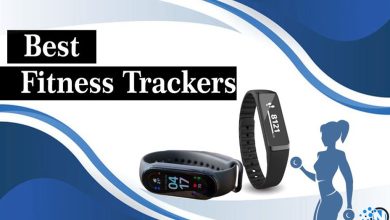
Ten years back, the unique iPhone hit shops withinside the U.S. for the primary time and transformed how groups designed and constructed cell phones. When Apple CEO Steve Jobs took the degree on the Macworld Conference & Expo in January 2007, he introduced that the organization could be freeing a wide-display screen iPod with contact controls, a next-era cellular telecel smartphone and a step forward net device.
Now, a decade later, right here are a number of the technologies that the unique iPhone and its incomers have made must-haves for all current smartphones. Some of the main technologies are:
Fingerprint Scanner
Like many things Apple has popularized on smartphones, the company is not the first company to have a fingerprint scanner built into its device, but with the introduction of Touch ID on the iPhone 5S, it has price, size, and reliability. And solve the problem of security technology hindrance. Innovative technology has also opened up attractive ways to use the device, such as unlocking a mobile phone or paying. Competitors soon began to use their high-performance equipment.
Gorilla Glass
The appearance of smartphones that make the screen so eye-catching and all-encompassing has an obvious flaw that most users have encountered at some point: the screen is cracked. Apple anticipated this error and did its best to use Corning’s expertise to correct it.
The glass and ceramics company has been experimenting with tempered glass for consumer electronics since 2005, but when Apple asked for thin tempered glass for iPhone screens, Gorilla Glass was born. The gold standard for mobile devices.

No Headphone Jack
Apple’s most controversial and criticized innovation may be the decision to remove the headphone jack from the iPhone 7. Asking customers to buy expensive Bluetooth headsets from Apple or its subsidiary Beats, or to pay for an inexplicably expensive adapter, may be a cynical move. Despite the overwhelming response from users, manufacturers still support Apple, HTC, Motorola and LeEco.

Apple Watch
My Apple Watch is basically a part of us now. We use it to track my exercise throughout the day, easily access messages or answer phone calls during the trip, and view my navigation reports. In our day or night plan. We are very grateful for our watch because it helps us stick to my daily life and keeps me on track easily throughout the day.
Built-In Security
Data and privacy protection is Apple’s top priority. Integrated security features prevent anyone except you from accessing your iPhone and iCloud data. The built-in privacy function minimizes the amount of information available to anyone except you, and you can customize what information to provide and where to provide it.
Your Apple ID allows you to access your iCloud information and account information for services such as the App Store and Apple Music.
App Tracking
Beginning with iOS 14.5, all applications must obtain your permission before they can be tracked through third-party websites and applications in order to locate you or pass your information to a data agent. After you grant or deny permission for an app, you can change the permission later and prevent all apps from requesting permission. For personalized help on these methods, please visit the Apple Support website.
App Library
IOS 14 brings major changes to the iPhone home screen. One of them will help clean up the iOS desktop. A new section of the application library is available at the bottom of the main screen page.
The iPhone app library view provides a much-needed order by letting you delete rarely used applications from the home screen while they are still installed on your device. It automatically organizes all the user’s applications in a simple, tidy and smart view to show the applications that may be useful at the moment. These applications are automatically classified into categories such as social, productivity, and creativity.

All-in-one Device
The iPhone puts a mobile computer in everyone’s pocket and lets them decide how to use it. There was a lot of segmentation in the mobile phone market prior to the introduction of the iPhone. Smartphones in particular have been widely regarded as business-centric devices that allow users to access company emails and calendars anytime, anywhere.
On the other hand, ordinary mobile phones have cameras and music players for ordinary users. Instead, Apple released the only model that can seamlessly switch between functions. Apple’s camera and iTunes music player, as well as calendar and email applications, allow users to complete most of the tasks designed for traditional smartphones.
Conclusion
Apple can use many emerging technologies to reinvent itself, gain breakthrough advantages, differentiate itself and change the smartphone market, and the entire industry already exists, and I don’t even know the new technology. Emerging security companies like Touchless Biometrics, and in many cases private and academic institutions, have already done hard work for them.




